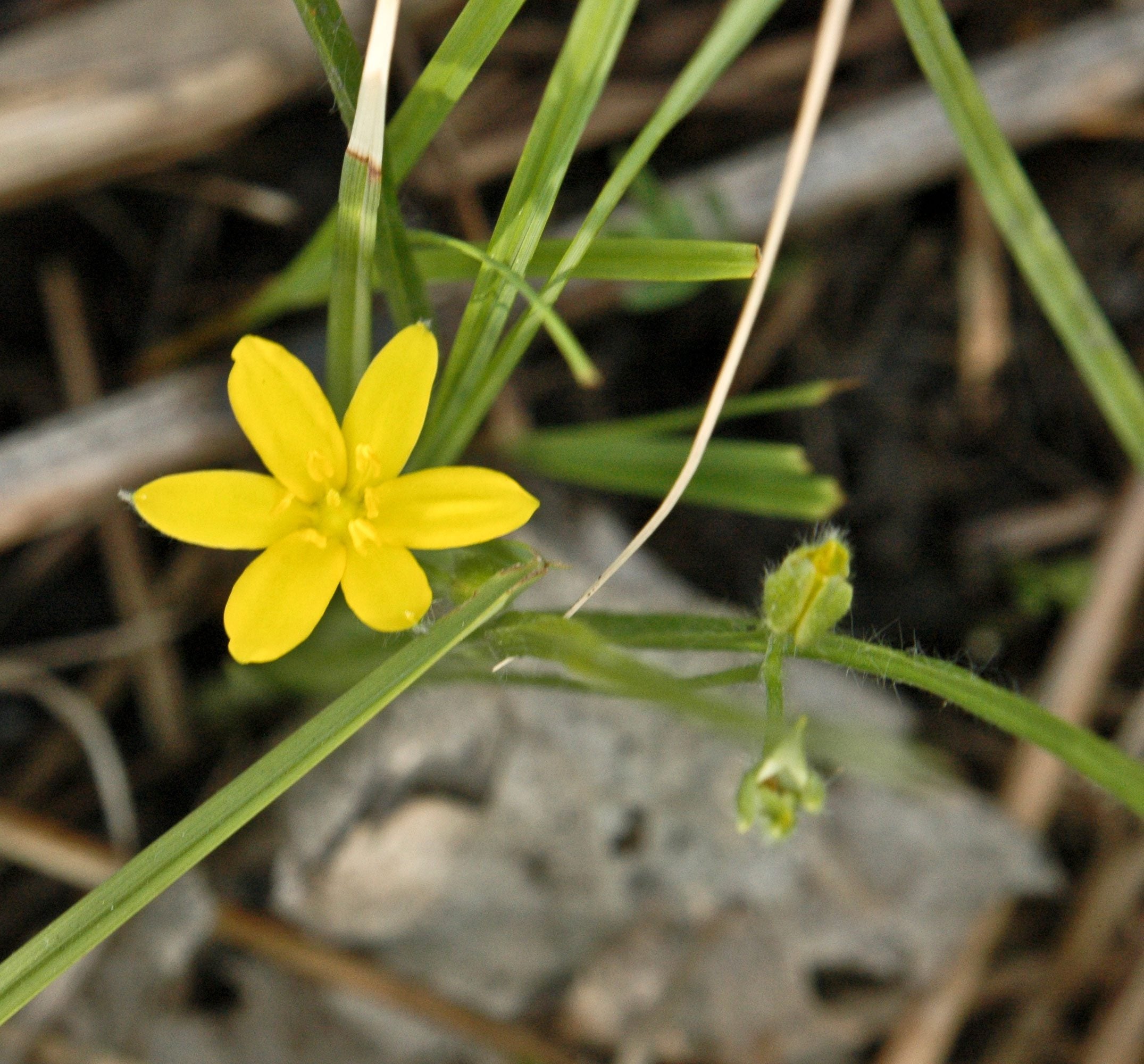What Is Stargrass: Hypoxis Stargrass Information And Care


Yellow stargrass (Hypoxis hirsuta) is not really a grass but is actually in the Lily family. What is stargrass? Envision slender green leaves and starry bright yellow flowers. The plant grows from corms and is a common sight in the continental United States. The plant is easily misidentified as a grass until the yellow stargrass flowers arrive. Each clump of corms naturalizes in its site, growing stargrass wildflowers in profusion over the years.
Hypoxis Stargrass Information
Curious gardeners may wonder, what is stargrass? The genus is Hypoxis with variety hirsuta the most common form. In their wild habitat, yellow stargrass flowers are found in open woodland, dry prairies, and meadow hillsides. They are small, yellow, grass-like plants that grow only 12 inches (31 cm.) tall and sport ¾ inch (2 cm.) sunny blooms from March to June. Flower stems are 3 to 8 inches (8-20 cm.) tall and stiff, holding the cheery flowers upright. The corms initially form short rosettes of foliage with deep green color with fine sporadic white hairs along the surface. Blooms last about a month and then form a seed pod filled with tiny black seeds.
Growing Stargrass Wildflowers
Once they are ready, the little seed pods burst and scatter the seed. Growing stargrass wildflowers from seed might be a chore, as gathering the minute ripe seeds for planting could require a magnifying glass. More satisfying and speedy results come from corms. These are the underground storage organs that carry the embryonic plants. It takes years for seedlings to form corms large enough to produce flowers. Plant corms in full to partial sun in rich loam to slightly dry or rocky soils. The plant prefers dry areas but can grow in slightly moist garden beds. It is also very tolerant of a variety of soil types, but the pH should be slightly acidic. The flower is attractive to butterflies and bees, which is useful Hypoxis stargrass information for the organic gardener. Mason bees, flies, and beetles feed on the pollen since the flowers do not produce nectar. Plants that encourage pollinators are always welcome in any landscape.
Yellow Stargrass Plant Care
Overwatering will really make this plant cranky. Once established, clusters of corms and their greenery rarely need water. They get the majority of their moisture in spring and greens tend to die back after the bloom period. Young leaves and stems are prey to several pests such as slugs, snails, and leafhoppers. Rust may form on the leaves and small rodents may eat the corms. Mature clusters of the plant should be divided every few years. Simply dig up the clump and separate healthy corms with good roots. Replant them in temperate zones or let them dry out and plant in spring where temperatures cause a hard freeze most of the winter season. Yellow stargrass flowers tend to become invasive if not controlled. Yellow stargrass plant care and management should include pulling the corms out if they pop up in unwanted areas.
Gardening tips, videos, info and more delivered right to your inbox!
Sign up for the Gardening Know How newsletter today and receive a free copy of our e-book "How to Grow Delicious Tomatoes".

Bonnie Grant is a professional landscaper with a Certification in Urban Gardening. She has been gardening and writing for 15 years. A former professional chef, she has a passion for edible landscaping.
-
 Moody Blooms For Spring: 8 Types Of Black Flowers To Add Drama To Spring Displays
Moody Blooms For Spring: 8 Types Of Black Flowers To Add Drama To Spring DisplaysFrom midnight burgundies to inky violets, several types of black flowers can enrich and embolden a spring display. Try these brooding bloomers for a moody garden
By Tonya Barnett
-
 My Homemade Orchid Fertilizer Always Brings More Blooms – Here's The Easy Recipe That Transforms Plants
My Homemade Orchid Fertilizer Always Brings More Blooms – Here's The Easy Recipe That Transforms PlantsScientist-turned-gardener Mary Ellen Ellis shares her tried-and-tested DIY orchid fertilizer recipe, plus more ingredients to try for healthy, happy plants.
By Mary Ellen Ellis